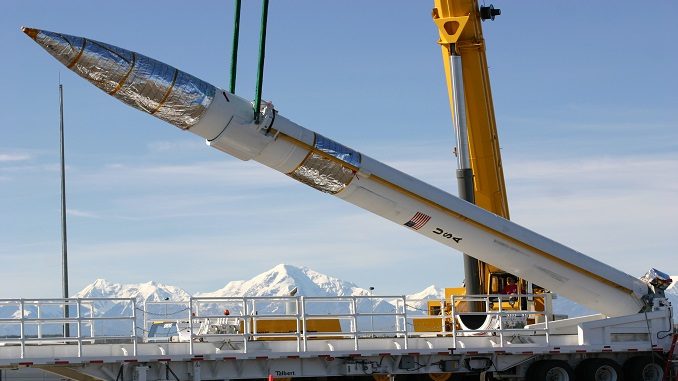
Calls for a more significant U.S. investment in missile defense are escalating after North Korea carried out its first successful test of an intercontinental ballistic missile this week, potentially putting Alaska in the nation’s range for the first time, The Hill reports.
Tuesday’s test, which leader Kim Jong Un called a “gift” to America for Fourth of July, elicited calls to spend more on missile defense at home and deploy more systems to Southeast Asia as time and options for reining in Pyongyang dwindle.
“Alaskans awoke to disturbing news that North Korea tested a missile that some experts say may be able to reach Alaska in the near future. Now more than ever, it’s imperative for Alaskans and the rest of the nation that we be prepared,” Senator Dan Sullivan wrote on Facebook Tuesday.
“That’s why I recently introduced a bill – the majority of which was included in the National Defense Authorization Act passed out of committee last week – that will significantly boost our missile defense capabilities and keep America safe,” Sullivan added.
Opponents of missile defense argue it’s a costly investment for something that cannot fully protect from North Korea and warn that sending more systems to South Korea and Japan could worsen regional tensions by angering China. North Korea still lacks the capability to mount a nuclear warhead on its ICBM, and one test does not mean the missile can reliably hit the United States.
But the news put into focus statements over the past few months from U.S. officials warning that North Korea is on the path to an ICBM capable of hitting the U.S. mainland and prompted calls from Alaskan officials for more protection.
“Recent news of North Korea’s efforts to build up nuclear weapons capabilities underscores why it’s so important to increase America’s military presence in Alaska. Given our proximity to growing foreign powers, and this week’s test, that need is now more urgent than ever,” Governor Bill Walker said in a statement to The Hill on Wednesday.
The United States has a range of missile defense systems, from the Ground-Based Midcourse Defense (GMD) with sites in Alaska and California to the Aegis Ballistic Missile Defense on Navy ships.
There’s also the ground-based Patriot Advanced Capability for short- and medium-range ballistic missiles and the Terminal High Altitude Area Defense (THAAD) system, considered the most advanced of the systems with the longest range, at about 200 kilometers.




Be the first to comment